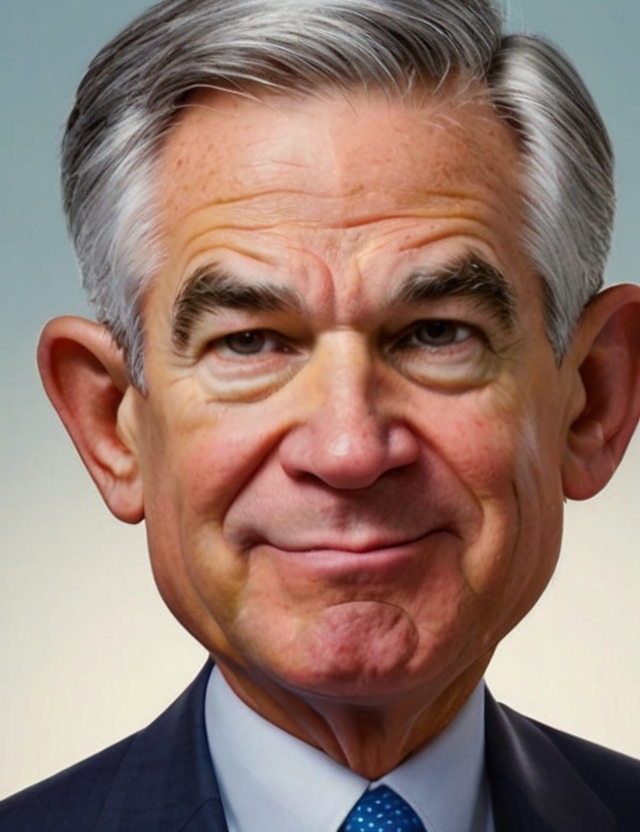Jerome Powell, Chair of the Federal Reserve, recently hinted that he does not anticipate imminent increases in interest rates despite inflation concerns. This statement initially brought a wave of optimism to Wall Street, igniting a significant rally in U.S. stocks—the largest seen after a policy meeting since the previous December. Concurrently, Treasury yields saw a notable decrease, dropping over ten basis points across various maturities. This was triggered by Powell’s remark during a press conference that a rate hike in the near future seemed unlikely. However, this sentiment was short-lived.
Powell also clarified that a rate cut wasn’t necessarily on the immediate horizon and indicated that it would take some time for the central bank to be sufficiently confident in the declining inflation trajectory to consider an easing of policies. This mixed message led to a swift reversal in the markets, with equities ending the day lower and Treasury yields partly recovering their earlier losses.
A financial analyst pointed out, “The clear takeaway from Powell’s comments is that the threshold for increasing rates is extremely high right now. The current rate levels are undeniably restrictive, but the real question is whether they are restrictive enough and the timeframe it will take to see their full impact on the economy.”
From the start of the year, there has been a notable shift in market sentiment. Initially, the consensus leaned towards multiple rate cuts and a steady decrease in inflation. However, recent developments have injected a dose of reality back into the market forecasts, with reduced expectations of rate cuts amidst a resilient U.S. economy, robust job growth, and stubborn inflation levels.
One of our financial strategists noted, “Recently, the bond market has been particularly jittery, reacting to any signs that the Federal Reserve might adopt a more hawkish stance than anticipated. The adjustment in expectations—from anticipating six quarter-point rate cuts down to barely more than one—reflects a significant shift in investor outlook.”
The equity and bond markets experienced a downturn in April, highlighted by a rise in two-year Treasury yields surpassing the 5% mark and the S&P 500 recording its most significant monthly decline since October. This tension was a precursor to the latest Federal Open Market Committee (FOMC) meeting, with critical economic data such as the upcoming jobs report and future inflation updates poised to influence the Fed’s policy decisions.
During the FOMC’s recent discussions, there seemed to be a concerted effort not to let market expectations stray too far from the realities of sustained growth, persistently high inflation, and the potential for rate cuts later in the year. The day ended with substantial volatility in trading, encapsulating the uncertainty and mixed signals communicated by the Fed.
One market analyst remarked, “While Powell’s acknowledgment of the current restrictive nature of interest rates and his hints at potential cuts provided some initial comfort to the markets, it remains to be seen whether this will support a prolonged rally in stocks. It all comes down to how upcoming economic data aligns with the Fed’s targets, especially concerning inflation.”
In response to Powell’s cautious optimism, the markets experienced a rollercoaster of emotions, rallying on hopes of a dovish turn, only to falter as the complexities of economic indicators and policy implications set in. Another financial expert commented on the situation, “The markets are very much in a state of data-dependency now. The recent rebound in bond prices, while logical, appears to have lost momentum as yields have stabilized somewhat, indicating that investors may be reaching their limits on optimism based on current data.”
The fluctuating market reactions underscore a broader theme of uncertainty and caution among investors, who are keenly aware of the delicate balance the Fed must maintain between stimulating economic growth and controlling inflation. The discourse around monetary policy continues to be a significant driver of market behavior, with each statement and hint from the Fed dissected for implications about the future direction of the economy.
As the markets digest these mixed signals, the focus will increasingly shift to the upcoming economic reports and their potential to influence the Fed’s policy trajectory. With the stakes high, investors and policymakers alike are navigating a complex economic environment, where clarity and foresight are in high demand.


